Introduction of laboratory
Division of Allergen Research
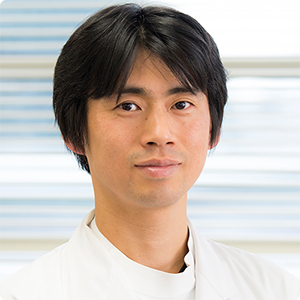 Chief:Yuma Fukutomi
Chief:Yuma FukutomiIn allergic diseases, proper identification of causal allergens for each patient with allergic diseases is of clinical importance. In our laboratory, we are working on the development of better methods for diagnosing allergen-specific reactions in patients with allergic diseases, and on the measurement of allergen levels in the environment.
With the advancement of genetic engineering technology, it has recently become possible to diagnose allergies using allergen components. This has made it possible to understand the pathogenesis of allergic diseases in more detail and to determine disease prognosis and severity. In our laboratory, we have been working to establish the clinical validity of allergen components for many allergenic species, including mites, pollen, fungi, insects, and food allergens.
Our laboratory also conducts precipitation antibody tests to search for antigens that cause allergic respiratory diseases (such as ABPA) and hypersensitivity pneumonitis, and conducts tests on specimens requested from all over Japan. In addition, we perform sputum cytology and fungal culture tests to contribute to more accurate allergy diagnosis. We are also working to spread knowledge of allergens and allergy diagnosis in Japan, and have prepared and published an allergen manual for Japanese physicians and patients based on a review of past literature.
Akemi Saito, Sachiko Nakayama
Division of Drug Hypersensitivity
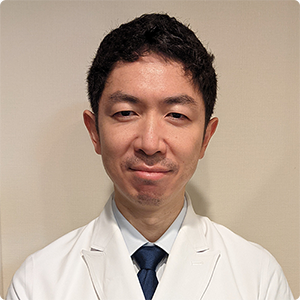 Chief:Yosuke Kamide
Chief:Yosuke Kamide This laboratory was created due to the organizational change at the Clinical Research Center in April 2021. There is no dedicated research doctor, and the team is composed allergologists and pulmonologists who are concurrently assigned to the hospital. Kamide (former director of the Information Promotion Laboratory) is the department manager and conducts research with the exclusive engineer, Keiichi Kajiwara. Additionally, Hiromi Harada is in charge of research assistance as a secondment from the affiliated clinical laboratory.
Non-steroidal anti-inflammatory drug (NSAID) intolerance is drug hypersensitivity that is not mediated by immunological mechanisms such as IgE Fc・RI binding and antigen presentation to T cells by dendritic cells. It has been reported that urinary leukotriene E4 (LTE4) level increases significantly upon aspirin challenge. In our laboratory, various lipid mediators including LTE4 are measured to elucidate the pathophysiology of NSAID intolerance and establish diagnostic and treatment methods. In 2020, we found and reported that a certain biological agent for bronchial asthma relieves NSAID intolerance.
We are also conducting research in collaboration with various facilities such as Akita University and Hyogo College of Medicine to elucidate the pathophysiology of diseases with strong eosinophil inflammation, like eosinophilic granulomatosis with polyangiitis.
Keiichi Kajiwara, Chinatsu Kono
Division of Epidemiological Statistics
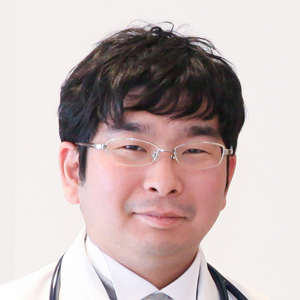 Chief:Kyohei Takahashi
Chief:Kyohei TakahashiWork of Epidemiological Statistics Laboratory
Our laboratory was established in April 2021. We conduct research in parallel with our daily practice. We are working daily on planning allergy-related research, applying for research funding, and writing papers. We guide junior doctors in writing papers and research applications, and more than 20 papers are published annually, and we receive several research grants annually.
Role of the Laboratory of Epidemiological Statistics
The roles required of each laboratory in the Research Center of Sagamihara Hospital include publication of papers, acquisition of research funds, and cooperation in clinical trials and clinical research. While examining a large number of patients in daily practice, it is feasible to plan clinical research and continue to generate new evidence from clinical practice by taking advantage of the large number of patients, even if clinical practice is busy, and this is what is strongly required of our hospital as an allergy center hospital. We will continue to actively engage in research in cooperation with other laboratories, and develop research plans for new randomized controlled trials and other studies with high quality study designs that are rooted in clinical practice, and carry out research.
Division of Clinical Trial Management
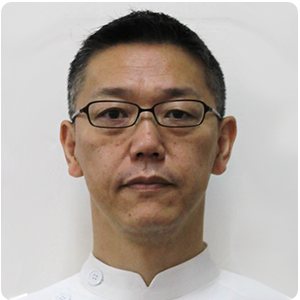 Chief:Toshihiro Matsui
Chief:Toshihiro MatsuiOwing to the increase in the number of clinical trial subjects and that of tasks entrusted to the Clinical Trial Management Office by sponsors, it became necessary to work overtime regularly. To help alleviate this stress, the number of Clinical Trial Management Office members has also been increased. In addition, because the workload for pharmacists in dispensing medications has increased, with the cooperation of the Pharmaceutical Department, one pharmacist belonging to the hospital was requested to take over the work of the Clinical Trial Management Office for half of the day. As a result, the Clinical Trial Management Office now has one head (physician, concurrent appointment), one primary investigator (pharmacist), one cooperating pharmacist for half a day, three clinical trial clerks, and six clinical research coordinators (four nurses and one clinical laboratory technician), and one medical assistant. Because the development of new drugs comes in waves, maintaining the same number of clinical trial subjects across departments is difficult; however, we are striving to maintain the total number of clinical trial subjects as a whole by having multiple departments participate in clinical trials (a total of eight departments in 2020). In addition, we will endeavor to gain the trust of the sponsors by working prudently on the requested clinical trials. Thus, we have received requests to run clinical trials directly from the sponsors without involving the National Hospital Organization headquarters, which has helped improve the performance of the Clinical Trial Management Office as a whole. We would like to express our gratitude to the nursing, pathology, pharmacy, examination, radiology, and other related departments for their cooperation, which has enabled us to smoothly conduct the clinical trial work. We will continue to actively conduct several clinical trials to provide new treatment options to patients with intractable diseases for which there are no effective drugs and to contribute toward the development of new drugs.
Division of Asthma
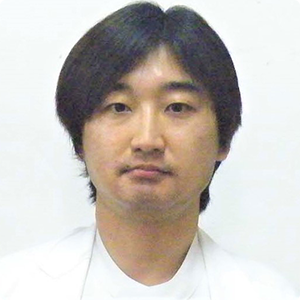 Chief:Kiyoshi Sekiya
Chief:Kiyoshi SekiyaThe Bronchial Asthma Laboratory does not employ full-time physician scientists, but consists of medical technologists and allergists and pulmonologists who, concurrently with their daily clinical practice, are engaged in clinical research in allergic and respiratory diseases in general, and offer information for the purposes of education and dissemination of knowledge. Our main study focus is the establishment of approaches for the prophylaxis, diagnosis, treatment, and improvement of the long-term prognosis for bronchial asthma. The diagnostic criteria for bronchial asthma have yet to be established, which often leads to a misdiagnosis. Therefore, we want to develop novel approaches to establish accurate diagnostic procedures through the accumulation of data from multiple perspectives, including pulmonary function tests, airway reversibility tests, airway hypersensitivity tests, sputum eosinophil counts, exhaled nitric oxide levels, and forced oscillation techniques using MostGraph, for the objective evaluation of airway stenosis, airway hypersensitivity, and chronic airway inflammation, which constitute the basis of bronchial asthma diagnosis.
In addition to bronchial asthma, we are also pursuing clinical research related to non-steroidal anti-inflammatory drug intolerance, eosinophilic polyangiitis granulomatosis, allergic bronchopulmonary mycosis, and prolonged chronic cough, which are associated with bronchial asthma, with the hope of disseminating the results of these studies for all researchers.
We are also actively engaged in joint research with other facilities and various laboratories at our research center, focusing on the analysis of allergens, lifestyle habits, environmental factors related to various diseases, and the identification of disease biomarkers.
We intend to continue offering important and useful research results for clinicians.
Masanobu Higo(medical laboratory technician), Kazuaki Nakano(medical laboratory technician)
Division of Skin Allergy
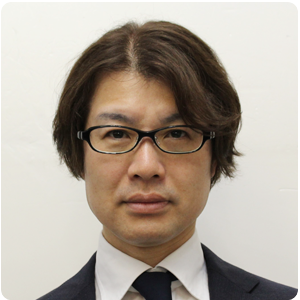 Chief:Daisuke Suzuki
Chief:Daisuke SuzukiAtopic dermatitis is one of the most common diseases in dermatology. In recent years, novel treatments such as biologics and JAKinhibitors have become available for atopic dermatitis, making it much easier to achieve remission than before. However, there has been little discussion about strategies after achieving remission. In some cases, it may be necessary to continue the same treatment to maintain remission, but in many cases, remission can be maintained even after reducing treatment intensity.
The Skin Allergy Laboratory would like to offer the information about the intensity of treatment required to maintain remission and the proportion of cases in which systemic treatment can be finished.
In addition, we thoroughly reevaluate treatments and diagnoses in the cases that do not achieve remission resisting systemic treatment for atopic dermatitis.
Division of Food allergy
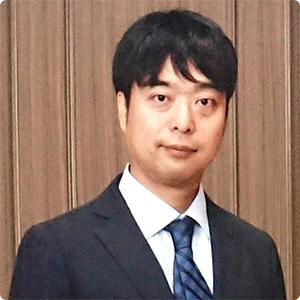 Chief:Noriyuki Yanagida
Chief:Noriyuki YanagidaThe Food Allergy Laboratory is actively engaged in epidemiological and clinical research for developing new methods of prevention, diagnosis, and treatment of pediatric allergic diseases such as food allergy, atopic dermatitis, bronchial asthma, allergic rhinitis, and anaphylaxis as well as the improvement of disease management. The research projects are conducted in collaboration with the Department of Pediatrics in our institution and other medical institutions and research institutes across Japan and overseas. Some of the major research projects that have been undertaken include the development of new diagnostic methods using allergen components and allergen immunotherapy for children with severe food allergies as well as the development of supportive medical measures for food-allergy patients with the goal of improving patient-safety during oral food-challenge tests. In collaboration with laboratories of the Clinical Research Center and other institutions, we are also involved in conducting microbiome analysis and food allergen analysis for severe food allergy. We are also intimately involved in research on other allergic diseases, from analyzing biomarkers to developing treatments. In addition, we are conducting a nationwide survey on immediate-type food allergy and a survey on the implementation status of oral food-challenge tests. Our laboratory operates with the Food Allergy Research Association as secretariat, and propagates valuable information through our website, intended to benefit people affected by food allergy.
Researcher: Naoko Fusayasu(Pediatrician, Allergist)
Laboratory Members: Chizuko Sugisaki, Fumiko Goto, Kazuko Kutsuwada, Aki Washizuka, Yoshiko Kakizaki(Dietitian), Ami Komai(Dietitian), Yoshiko Ueda
Division of Nasal Allergy
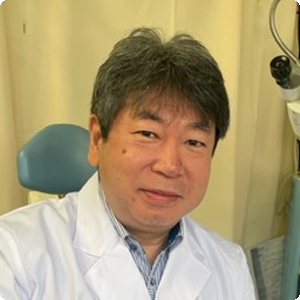 Chief:Tatsutoshi Suzuki
Chief:Tatsutoshi SuzukiAccording to the Nose Allergy Clinical Practice Guidelines 2020, one in two people has some kind of nasal allergy, which affects various nasal diseases. In our laboratory, we have been measuring the number of pollen scattering in progress since 1965. Various pollen is collected with a Durham sampler, measured visually, and distributed mainly in the scattering of cedar and cypress in spring and ragweed in autumn. Immunotherapy for allergic rhinitis (injection method or sublingual method) has been introduced to many patients, followed up, and is monitoring the transition of clinical symptoms. In this clinical study, Cry j 1 and Cry j 2, the causative antigenic proteins of cedar pollen, were discovered at our Clinical Research Center. (Yasueda, H., et al.: Isolation and characterization of the major allergen from Japanese cedar pollen. J. Allergy Clin. Immunol. 1983)
Many patients have sinus lesions such as eosinophilic chronic rhinosinusitis (ECRS) or eosinophilic granulomatosis with polyangiitis (EGPA), and we examine the nasal mucosal removal tissue, blood, and urine. It has been reported that nasal sinus surgery is effective in reducing asthma symptoms and that urinary cysteinyl leukotoriene (CysLTs) is reduced by endoscopic sinus surgery. The allergic pathology of the nasal sinuses has become more complex, the complication of systemic symptoms has also increased, and there are not a few patients who are intractable. In cooperation with other departments of the Clinical Research Center, we hope to help investigate the causes of intractable pathologies, even if only a little.
Akemi Saito
Division of Rheumatic Diseases
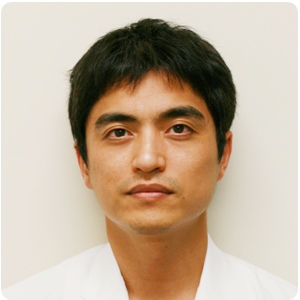 Chief:Hirotaka Tsuno
Chief:Hirotaka TsunoOur laboratory is active in clinical research and information dissemination on rheumatoid arthritis (RA) and other rheumatoid diseases.
The main research activity is the operation and analysis of Japan's largest large-scale RA database "NinJa (National Database of Rheumatic Diseases in Japan)" started in 2002. About 50 institutions nationwide participated in NinJa. NinJa collects clinical data of more than 15,000 cases, which is about 2% of RA patients in Japan, every year. Using these data, we analyze the current situation, changes, and problems of RA medical care, and present the results at academic conferences and papers. NinJa's data is also used as basic data for drug publicity applications and the Health Science Council.
In addition, research on the usefulness of the measurements of CD64 molecules on neutrophils (nCD64) as an infection marker is ongoing. We utilize nCD64 in daily medical care such as differentiation of exacerbation of the disease itself from the complication of infectious disease in rheumatic diseases, and the differential diagnosis of FUO (fever of unknown origin). Furthermore, we are participating in various research of AMED and the Ministry of Health, Labor and Welfare and collaborating with multiple facilities.
We are actively disseminating information and educational activities to patients and hold the "Sagamihara Lecture Meeting for Patients with Rheumatic Diseases" every year in collaboration with the Patients' Association. We are also working to disseminate the “Support guide for patients with rheumatoid arthritis according to their life stages for medical staff”, which Matsui was involved in creating as a principal investigator of the research group of the Ministry of Health, Labor and Welfare.
Takao Yamanaka, Shinichi Nogi, Yusuke Yano, Tomohiro Suzuki, Toshiki Ohisa, Tadashi Hayakawa, Remi Kawashima
Division of Rheumatic Diseases, Surgery Division
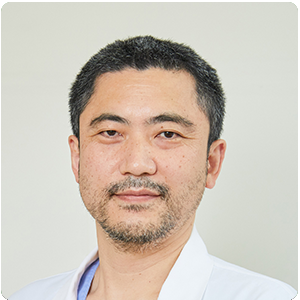 Chief:Mitsuyasu Iwasawa
Chief:Mitsuyasu IwasawaOur laboratory was reorganized in 2021 and made a new start. The activities of our laboratory fall into two major categories: clinical and basic research. The subjects of our clinical research include analyzing the kinematics of Kudoh Elbow, a prosthetic elbow joint developed at our institute, and assessing the results of surgical treatments of foot deformity in patients with rheumatoid arthritis. The results of these investigations have been presented at international and domestic meetings and were also published in international journals. Drs. Hirai and Yamato are energetically engaged in endoscopic spine surgery and have presented their findings at many academic meetings. Our basic research focuses on the etiology of osteoarthritis (OA). We are specifically interested in the mechanisms underlying cartilage degeneration and the development of pain in OA knee joints and are conducting research to clarify these points primarily through analyses of clinical samples obtained from patients suffering from OA. The ultimate goal of our research is to develop new strategies for inhibiting or retarding cartilage degeneration.
Division of Intractable Neurological Diseases
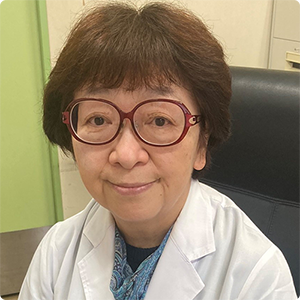 Chief:Kazuko Hasegawa
Chief:Kazuko HasegawaThe Intractable Disease Law was enacted in 2014 in Japan. The Law has three major aims: 1) to promote investigation into pathogenic mechanisms, 2) to improve diagnosis and treatment method, and 3) to realize the society where patients suffering from intractable disease can spend their time in a better state. Intractable diseases encompass hundreds of diseases. In the category of intractable neurological diseases, which are the targets of our study, there are more than 300 diseases ranging from very rare diseases such as Huntington’s disease with a small population to less rare diseases such as Parkinson’s disease with a relatively large population. This category includes diseases that even we, the neurologists at a national hospital, encounter only once in our lifetime. For such diseases, the period leading up to diagnosis tends to be long. Our laboratory has researchers not only from Japan but also from around the world in a wide range of fields, including clinical research, neurophysiological research, genetic research, diagnostic imaging, treatment development, and neuropathological research. We are engaged in research on intractable neurological diseases including relatively common diseases, such as Parkinson’s disease and very rare diseases, such as Huntington's disease. Though our laboratory is small, we are working hard for the purpose of eradicating intractable neurological diseases while developing treatments and improving the quality of the lives of our patients.
Doctor Kawashima, Takeda, Ryo, Hirano, Terada, Otsuka, Uchino come to our Lab from time to time as research fellows to conduct joint study with us. We really appreciate them for brainstorming sessions. We would like to further our study by receiving inputs from them.
The responsibility for the wording lies with Kazuko Hasegawa
Links
①JaCALS (Japanese Consortium for Amyotrophic Lateral Sclerosis Research) :
Research on etiology and natural history of amyotrophic lateral sclerosis
②JALPAC (Japanese Longitudinal Biomarker Study in PSP and CBD) : Research on biomarkers for tauopathies and development of treatment method
③FTLD-J : Fronto-Temporal Lobar Degeneration Registry Study―Japan
④Brain Bank: Neurological Disorders Autopsy Registry Study
⑤Prion Disease Surveillance Study
⑥Cerebral Vessel Thrombosis Registry Study
Saburo Yagisita MD. PhD, Tsuwa Ichikawa(technician), Miyako Ishiyama, Aya, Kawanami MD. PhD, Naohiko Togashi MD, Miyagi Yuichi, Tateno Kotona, Shigeo Murayama, Akiko Uchino
Division of Surgical Immunology
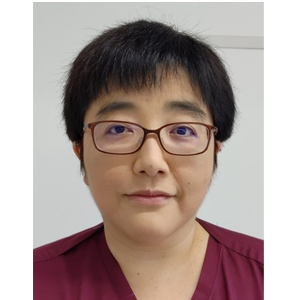 Chief:Nobue Futawatari
Chief:Nobue Futawatari1.Background and Objectives
In Japan, about 120,000 people are diagnosed with gastric cancer each year, and about 40,000 people die from the disease. Helicobacter pylori (Hp) infection is the most common cause of gastric cancer, and Hp is recognized as a Group I carcinogen by the International Agency for Research on Cancer. More than 90% of gastric cancer patients in Japan are infected with Hp. However, the incidence of gastric cancer due to Hp infection is reported to be 1-3%, but the predictive cause of carcinogenesis remains unknown.
Cancer/testis antigens (CTAs) are a group of tumor antigens expressed in less than 40% of a wide variety of cancer tissues but not in normal tissues except for testicular germ cells. CTAs are particularly attractive targets for immunotherapy and are expected to be used in combination therapy with CTA peptide vaccines. CTAs may be advantageous biomarker for systemic cancer diagnosis and prediction of prognosis because of their specific and broad expression patterns in various cancer types.
Kita-Kyushu lung cancer antigen-1 (KK-LC-1) was first identified in patients with lung cancer and is a CTA. In our previous study, KK-LC-1 is expressed in 32.6%, 13.7%, 5.2%, and 79.5% of lung cancer, breast cancer, colorectal cancer, and gastric cancer, respectively. Furthermore, we demonstrated that it is associated with Hp infection and is also expressed in precancerous conditions.
We would like to study whether KK-LC-1 expression in the gastric mucosa is involved in gastric carcinogenesis and thus examine the risk of early diagnosis, post-eradication gastric cancer development, and multiple cancer.
Division of Tumor Immunology
Under Construction
Division of Molecular Biology
Under Construction
Division of Clinical Immunology
Under Construction
